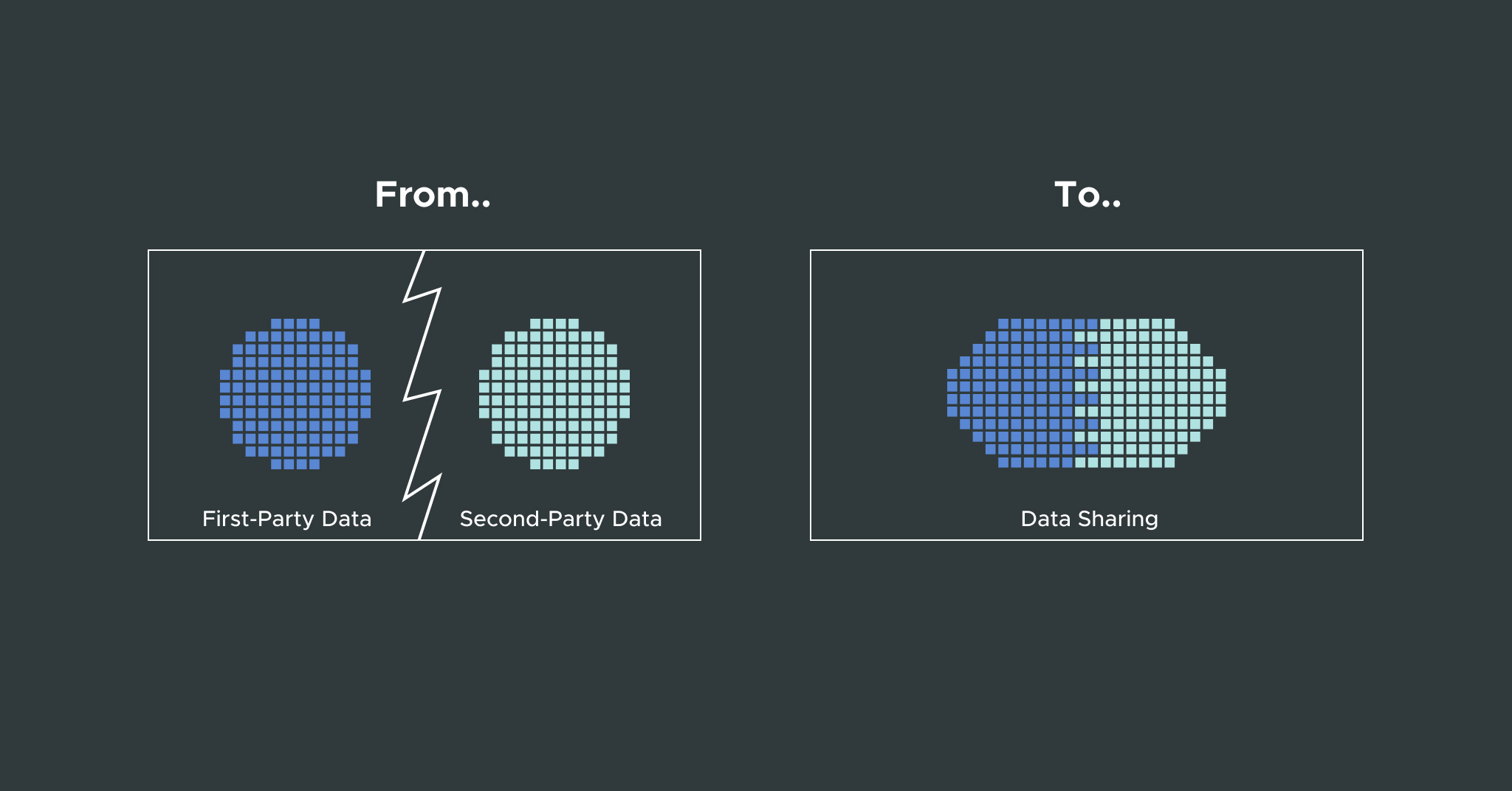
When it comes to effectively consuming data for business insights, there are six key areas: data, access, model, analyze, consume, and insights. AtScale’s Data and Analytics Maturity Model Workshop explains how organizations can build the skills and knowledge to advance their capabilities in each of these areas.
This post will cover module three, discussing the benefits of using data sharing and developing a culture around it. By advancing beyond just blending first-party and third-party data to a strategy of sharing internal data with external partners, organizations can improve their business operations.
What is Data Sharing?
Data sharing involves first-party and second-party data owners. First-party data refers to the data within your enterprises and corporate firewalls. This tends to be proprietary data that’s collected from customers and through business operations such as purchases via a website or customer interactions with sales and customer service.
The second-party data is from an external owner, whether it’s a partner or supplier. While sharing your first-party data with the external party is beneficial, the real value comes from them sharing their data with you. As the use cases below illustrate, this reciprocal relationship can make your operations more efficient and improve the customer experience.
Common Use Cases for Sharing Data
Three common use cases for sharing data include:
- Managing Supply Chain: Enabling partners helps to optimize inventory management. For instance, retailers can ensure they have the right products in their stores by sharing their inventory data with suppliers or vendors. It’s in the best interest of the suppliers to sell as many products as possible, so they’ll be willing to help retailers get the inventory they need.
- Optimizing Marketing ROI: Enriching first-party data with third-party data improves customer targeting. By taking internal customer data and overlaying external data, marketing teams can better reach the right customer, with the right message, at the right time.
- Predicting Customer Behavior: Sharing anonymous purchase data can help companies better understand customer behavior. When brands share this anonymized customer sales data with retailers, it helps the retailers improve the shopping experience for their own customers by promoting products that have proven, through data, to be in high demand.
The Challenges with Data Sharing
Data sharing has a number of advantages, but it’s not without some challenges and risks.
Secure data interfaces: It can be difficult, and even risky, to provide data interfaces with partners. Enterprises need to make sure that partners can only see the data relevant to them, and cannot access any proprietary data or personally identifiable information (PII) that may put sensitive data in the hands of a potentially malicious person.
Scaling data access: Most enterprises are already facing challenges when scaling analytics for their internal users. With data sharing, they’ll also need to support external users. This requires understanding query patterns for both internal and external users and dealing with the idiosyncrasies between the two.
Self-service experience: The second-party may not fully understand where their data is and what it means, making it difficult to provide a self-service data analytics experience. An effective self-service approach requires a business-friendly interface so that suppliers or vendors can better understand the nature of the first party’s business.
Best Practice: Leverage a Semantic Layer to Share Data
The semantic layer is a way to provide secure, scalable, self-service data analytics experiences with external partners. AtScale’s semantic layer can create business-friendly models by merging second-party data with first-party data. This enables suppliers and vendors to access relevant data without having to understand where the data is or how it’s stored.
In addition, governance rules allow the first-party enterprise to prevent external partners from accessing proprietary data or PII. On top of that, the data virtualization capability of AtScale’s semantic layer delivers scalability so your data analytics infrastructure can handle the additional query workloads that come from external users.
Moving beyond data enrichment from third-party data sources to actively sharing data with second parties can strengthen relationships with vendors and suppliers. This active exchange of relevant data will help generate the kind of deep data insights that can dramatically improve business operations.
Watch the full video module for this topic as part of our Data & Analytics Maturity Workshop Series.


SHARE
Case Study: Vodafone Portugal Modernizes Data Analytics